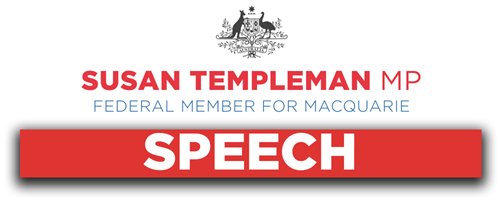
It shouldn’t be a surprise to anyone that I’ve requested to speak on the motion of youth mental health – improving support for young people has been at the core of my reasons for entering Parliament, and it is no secret that my family’s experience with the mental health of a child has been a defining one.
I welcome any level of government showing an interest in youth mental health. As they say in road safety – arriving late is better than not arriving at all.
But people are naive if they think that the crisis for young people’s mental health is a recent thing, on the back of bushfires, floods and COVID.
The 2019 assessment of the area’s health needs highlights high rates of suicide ideation and behaviour, and self-harm among young people, particularly young women.
The 2016 needs assessment identified increasing rates of suicide among youth. Yet not much changed in services available to young people in the Hawkesbury even with the clear and pressing need.
Bushfires and COVID have heightened the need, and without a doubt young people as a group are facing among the biggest impact from the loss of social contact and limits on their life, with a real danger to their mental health. The impacts have been documented by groups like Lifeline, beyondblue, Blackdog, SANE and ReachOut – big increases to their phone and online services.
But our issue is longer running than this year
Headspace was created in 2005 and slowly rolled out. A decade ago, in 2010, I raised with the Labor Mental health Minister that there was a huge gap from Blacktown to Bathurst, and when the first Penrith headspace opened on June 30, 2013, it was a significant win for western Sydney, but was just the start of expanding the service to the Hawkesbury and upper Blue Mountains.
Headspace centres have always been designed to offer youth-friendly services for people aged 12-25, including for mental health support and counselling; general health and sexual health services; education, employment and other social and vocational services; alcohol and other drug treatment services.
Mental health is not something you tackle in isolation, and, even though parents would wish that teens were not engaging in sex, struggling with their sexual identity, or using drugs and alcohol, that is a reality that the team at headspace works with, in a non-judgemental way.
When Labor was in government, we increased the number of headspace sites to 90. Seven years later there are only about 20 extra ones, many of them, like Katoomba, not funded to provide the full range of services.
Unfortunately for young people’s mental health in this region, a Liberal Federal Government in 2013 led to years of funding stagnation and cuts – by 2016, funding had reduced from $19 million a year to $8 million for 2017 and $5 million for following year. These figures are a matter of record, as are the letters the sector wrote in 2015 to the Prime Minister Tony Abbott imploring him to maintain funding.
So I’ve welcomed the late rediscovery of headspace.
Locally, the Nepean Blue Mountains Primary Health Network and Parramatta Mission, who delivers the service, are just getting started to provide a “no wrong door” access for young people in the Blue Mountains, and some bushfire-related outreach in parts of the Hawkesbury thanks to temporary extra funding that we fought for in the wake of the fires.
They simply don’t have the resources to expand Headspace to the Hawkesbury in the way this community deserves.
I’ve also had discussions with them and other mental health practitioners, school principals and councillors, young people, people with lived experien
n

